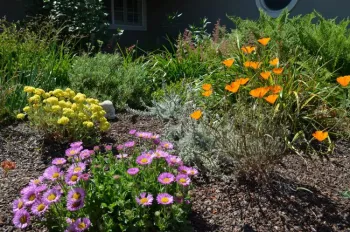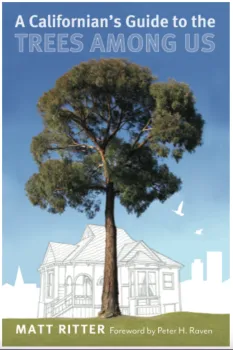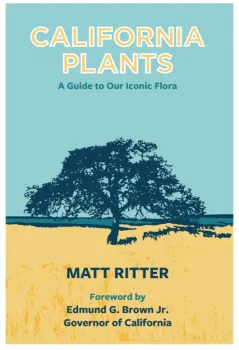Growing Knowledge
Constance Starner, Master Gardener

California Plants: A Guide to Our Iconic Flora, by Matt Ritter (2018)
We are so fortunate to live in one of the most biodiverse areas in the world. California's major biomes include the temperate rainforests of the Pacific Northwest, the Great Basin sagebrush steppes, and the Mojave and Sonoran deserts, as well as the Mediterranean climate in the western part of the state. We have woodlands, shrublands, grasslands, and wetlands. And of our more than 7,000 native plants, over than one-third of them are found nowhere else.
It would take years of study to feel truly knowledgeable about our vast plant life here, but Matt Ritter has published some clear, helpful guides for those of us who want to learn to identify and understand plants without being overwhelmed by vast amounts of information. Why is it important to identify plants and learn their names to appreciate them? One reason is that when our knowledge and understanding of plants increases, our enjoyment of them increases. We are able to see them in more detail as individuals with known characteristics, rather than a diffuse sea of green, rather like being able to recognize the face of a friend of family member in an anonymous crowd.
Matt Ritter grew up in Mendocino County where he first became interested in trees and other plants. He is currently a botany professor in the Biological Sciences Department at Cal Poly, San Luis Obispo, and the author of these two books, along with other books and articles. He also has a webinar, “California Plants” available on YouTube. In all of his writings, Ritter's love of plants shines through, helping to instill a sense of wonder and awe in his readers.
A Californian's Guide to the Trees among Us explores 150 trees commonly seen in California, primarily in urban and suburban settings, including introduced as well as native trees.

Each tree species is discussed over several pages, with botanical information such as the place of origin, the way it reproduces, the growth characteristic, and even the basis for its scientific name. We learn, for example, that the deodar cedar originated in the Himalayas in the Pinaceae family, that it is monoecious, evergreen with needle-like alternate leaves, and that it grows to 80 feet or more in height. Breaking down the scientific name, Cedrus is Latin for cedar and deodara is Hindi, meaning “tree of the gods.” Each of the 150 species is discussed in a similar fashion. The book also includes a guide to the color and time of year of trees' flowers, and the appendices detail information about changing plant names, the locations of the trees photographed, a glossary, and references for further reading.
Ritter draws upon science, natural history, drawing, photography, and prose in his descriptions of trees. He evokes the connection between humans and trees, commenting, “In cities, trees are often poignantly contrasted with stark buildings, sidewalks, streets, and gutters, silently reminding us of lost connections with nature and our longing for a time prior to our taming and civilization.”
This is a fascinating as well as informative guide that will be invaluable to anyone who wants to appreciate and observe the trees in our urban forests more closely. I have enjoyed using the digital version on city walks to better understand the trees I'm seeing along the way.

Each of the selected plants is discussed on a single page that includes the plant family, common and scientific names with a pronunciation guide, photographs, and a range map showing where the species generally occurs. There is also information about its natural history and some interesting stories about the plants, such as the way they were used by Native Americans. The entry on black oak (Quercus kelloggii)--pronounced KWAIR-kuss kel-LOG-ee-eye--tells us basic botanical information about the tree and that “Black oak acorns are the most flavorful and were coveted and traded by Native American tribes. The species was named by Smithsonian botanist John Newberry in 1859 in honor of Albert Kellogg, a Northern California botanist, physician, and a founder of the California Academy of Sciences.”
This is a guide that allows the reader to either search for targeted information or to peruse for general interest, always coming away with a sense of valuing and knowing the plants more completely. As former California Governor Jerry Brown says in his foreword, “Matt Ritter teaches us how to identify and enjoy each species, and to better understand how our future is linked to that of all of all other living things: our soil, our microbiota, and our wonderful and indomitable native plants.”
Anyone interested in learning more about the iconic plants in California will find these two guides both useful and full of fascinating information.

